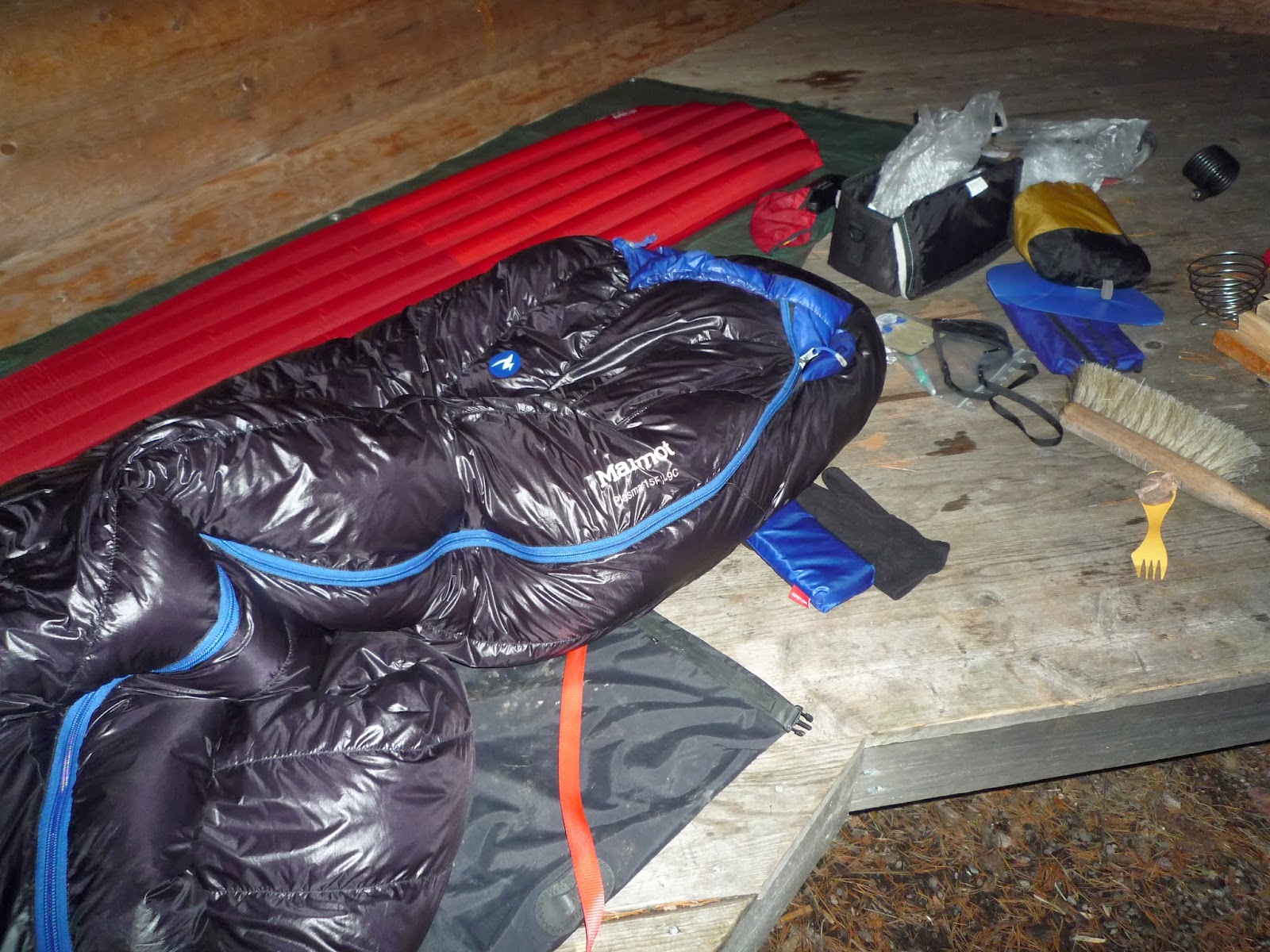 |
| Bikepack bivvying - my Alpkit Numo under my tarp |
Warning: very geeky camping gear post follows;
surf away now if you don't care and most well adjusted people
probably don't.
A camping mat is pretty fundamental to
getting a decent night's sleep when camping – whatever you pick is
a compromise; the light ones might not be tough, the tough ones not
light, the light, tough ones not cheap etc. In summer you can get away
with more (well, actually less); find some softish, non-rocky ground and even the lightest
closed cell foam mat can be great, but on hard uneven ground and as
winter approaches the mat becomes more important.
 |
| Winter bivvy, in a laavu (Finnish lean-to log shelter) |
I got an Alpkit Numo a few years back and have like it. It's one of the new generation of air mattresses - you blow into it
and it fills up like a balloon - very light and compact. I had always thought that just
getting you off the ground, so that heat can not move by conduction
away from your body into the ground as you sleep, was central to how
sleeping mats of all types worked but using the Numo demonstrates
it's more complicated than that. Once inflated the Numo probably is
about 10 cms thick – a lot more than most Thermarest style mats (a
couple of cms) or closed cell foam mats (>1 cm). This makes it
super comfy but also allows for some interesting physics – because
the Numo is just air inside (thermarests hold air in a complex lattice
of open cell foam that it inside the mat) you get convection currents
in it. Because the air can move inside the mat as it cools it will
move around - not working well as insulation. Alpkit obviously knew
this as in the body section of the mat (about shoulder to bum) they
put insulation, this was some sort of synthetic strands stuck to the
two inside-sides of the mat. When you blow the mat up this stretches
forming a lattice structure and stoping convection in that section of
the mat.
 |
| Late summer bivvy. |
The difference this insulation made is
very noticeable – I first sussed this on a wild autumn night in
upper Glen Nevis, near Steall waterfall. It wasn't terribly cold,
maybe around 5 degrees and I had a bag plenty warm enough. I slept
fine but it was quite noticeable that whilst my body was warm my legs
(where there is no insulation in the Numo) were getting cold from
below – just like the feeling of trying to sleep on ice with a too
thin mat. Hence despite being both really comfy and also light and
the most packable of my mats, I decided it was best to use it for
3-season camping only.
In the pictures above, on the left you can see the insulation still adhering to one side of the mat but on the right you can see where most of the insulation has come detached and collapsed back on itself.
This is issue is compounded by the
design problem with the mats – the insulation comes unstuck from
one side of the mat and collapses back against the other side hence
doing nothing. When I first noticed this with my first Numo, Alpkit
in their normal very customer-first way said “no worries, we'll
send you a new one”, but then the same thing happened with our
second Numo (my wife had discovered how much comfier my Numo was than her old thermarest), and then more recently
with the replacement to the original one. I've come to the conclusion
that you can get about two weeks use out a Numo before the insulation
peels away. I used one of them in that state on my recent bikepacking
trip where it was just below freezing at night and even sleeping on
the wooden floor of the laavu, I got cold enough from below to wake
me up (the first night in my tent in the car park I had slept
perfectly on my much thinner foam Z-rest). So the failure of the
insulation really limits the Numos to summer use only.
 |
| Slightly grumpy bikepacker in the morning twilight after a long chilly December night on a not warm enough mat. |
Alpkit admitted that the problem is
that when you breath into the mat blowing it up – they aren't self
inflating like Thermarests – the moisture in your breath gets
trapped and the sogginess inside makes the glue holding the
insulation in place fail. Alpkit have stopped making the Numos and
aren't going to do any more – they told me they're redesigning
their whole mat range for next summer – so of course that makes
this whole post sort of pointless: if you don't have a Numo you can't
buy one and if you do have one and it fails in the way mine did,
Alpkit can't really do anything about it now. But at least I've
proven to my own satisfaction that air alone isn't sufficient
insulator for sleeping. I guess it has to be stable air that can't
circulate, and the problem also shows how small a sealed space
-inside an air mattress- is enough for convection currents to have a
significant impact on the insulation quality of that mat.


